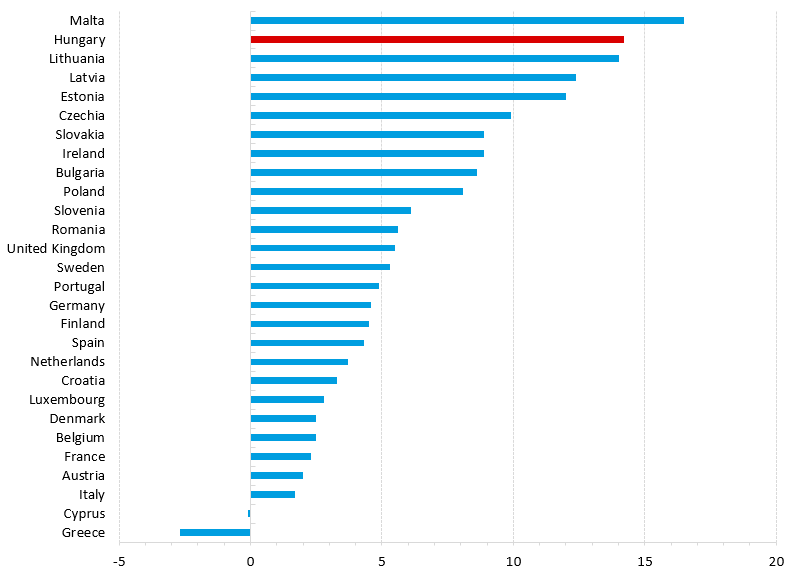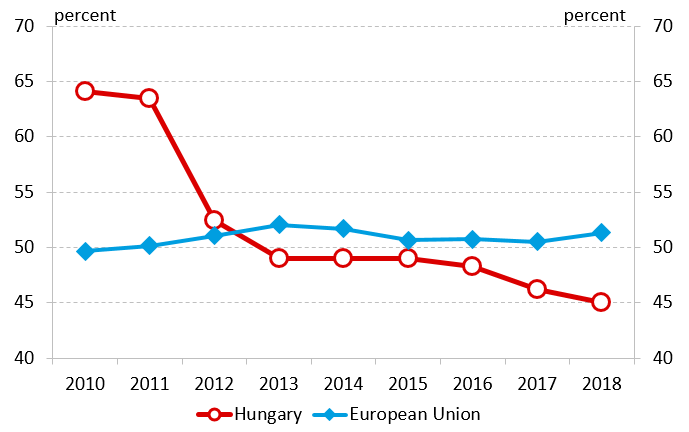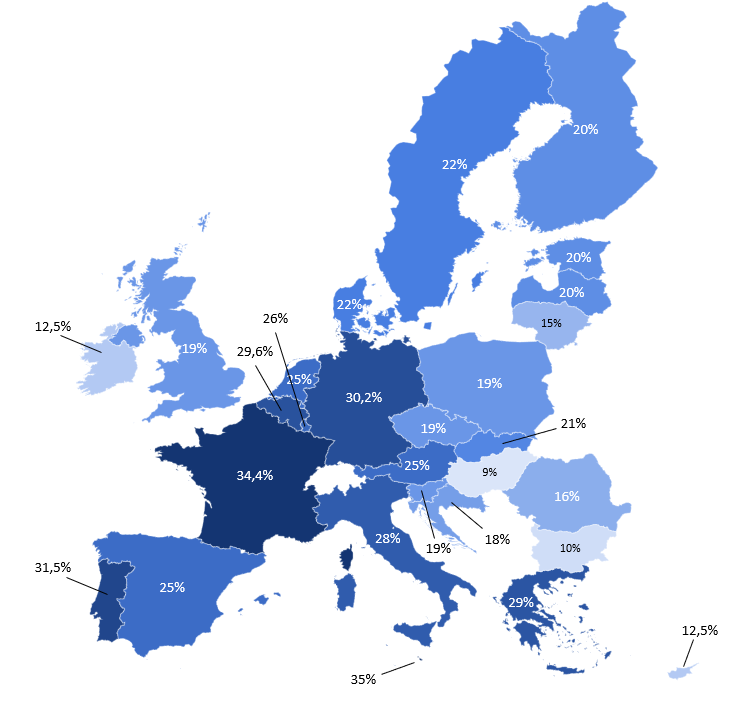Hungary is at the forefront in increasing employment
EnglishHungary is going through an exceptionally successful economic period. Following the global financial crisis, the first step was to restore economic balance, and since 2013, the economic performance has been dynamically improving. In several respects, the Hungarian economy does not only perform well, but is among the best performing Member States of the European Union. The following paragraphs will describe the exceptionally high increase in employment and its background.
Between 2010 and 2018, the employment rate grew by more than 14 percentage points in Hungary, which was one of the highest rates of growth in the Member States of the European Union.
Before 2010, it was Hungary where the least people worked in proportion to the population within the European Union, which fundamentally limited economic growth and the revenues of the budget.
Therefore, one of the main objectives of the Government that came into office in 2010 was to increase the number of employed people. The tax reduction and employment promotion measures taken to this end proved to be successful.
Since 2010, employment increased from 3.7 million to close to 4.5 million, thus the share of employed people exceeded the European Union average at the end of 2016, and by the end of 2018, it grew to 69.5 percent. In parallel with that, the unemployment rate dropped to 3.6 percent in 2018, which is one of the best results among the EU Member States. This way Hungary has come very close to full employment.
Chart 1: Changes in the employment ratio in percentage points, in the age group of 15-64, from 2010 Q4 to 2018 Q4.

Source: Eurostat
The reduction in labour taxes played a key role in the increase of employment.
In the course of the tax reform, that started in 2010, the emphasis in tax revenues was shifted from taxes on labour and capital to taxes on consumption and turnover. This kind of rearrangement and the more extensive taxation of sectors with stronger burden-bearing capacity was able to ensure a balanced budget and support the increase of employment at the same time.
Owing to the flat personal income tax rate, it was in Hungary where marginal tax rates on work have been reduced most since 2010.
Before 2010, Hungary had one of the most progressive tax systems, which applied a high tax rates on income from additional work, therefore it was not encouraging training and education. From an additional income (or corporate wage cost, to be more precise) of HUF 100, approximately HUF 65 had to be paid as taxes and contributions. Owing to the flat personal income tax rate, this ratio dropped below 50 percent, so more than half of the additional wage remains with the employee. This is the largest reduction in the European Union, and now the tax burden is lower than the EU average (Chart 2).
Chart 2: Marginal tax wedge of an employee without children and with average income

Source: OECD
Note: The average of the European Union includes those EU Member States that are OECD members, too, in 2018.
In the course of establishing a tax system that supports the growth of the economy, in addition to taxes on labour, taxes to be paid by corporations were also reduced.
The first steps focused on small enterprises. The rate of the corporate income tax to be paid by them was reduced in 2010, from 19 percent to 10 percent, and simpler taxation options with less administration were also introduced. Especially the small taxpayers' tax scheme (KATA) has become popular, but the use of small business tax (KIVA) is also becoming increasingly widespread.
Subsequently, the corporate income tax rate applicable to larger companies was also reduced, and in 2017 the tax rate was cut to 9 percent for all taxpayers, indicating the lowest corporate income tax rate in the European Union. The decrease in taxes on capital increases investments, so it extends employment and boosts the economy.
Chart 3: The upper rate of corporate income tax in the European Union in 2018

Sources: European Commission
